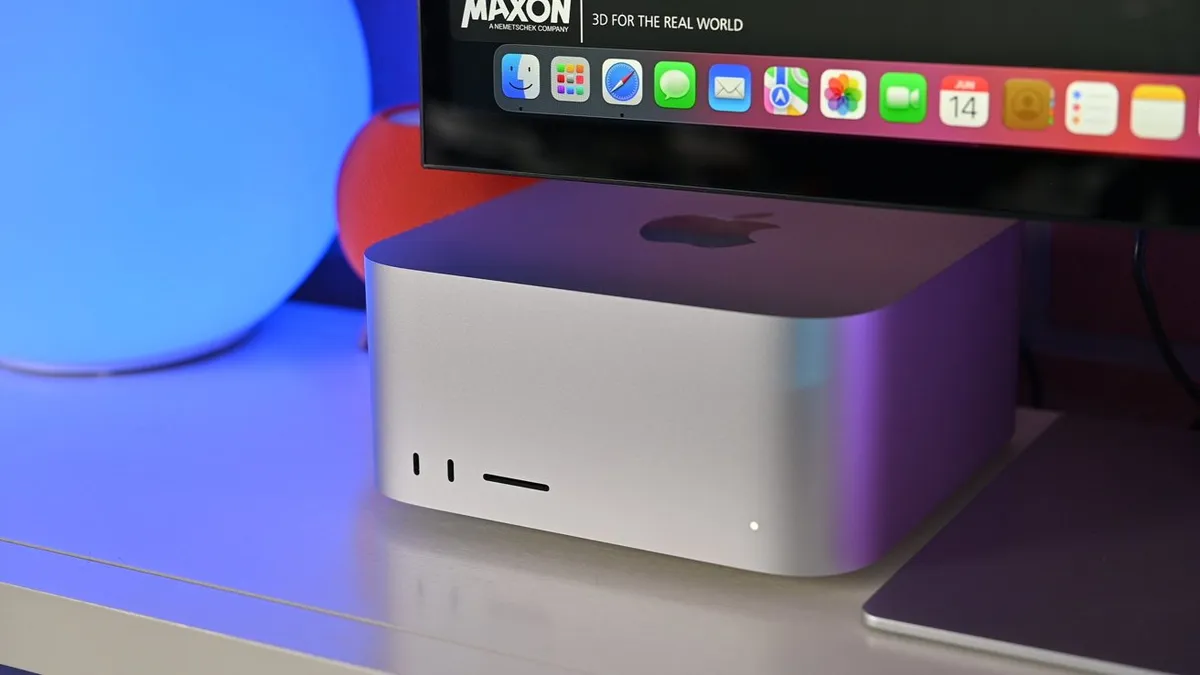
With every generation, Apple's Max-series chips have consistently pushed the boundaries of performance, and the new M4 Max in the Mac Studio delivers the most significant leap yet in terms of computational power. Apple's custom silicon has evolved dramatically, with each iteration improving key aspects such as performance, efficiency, and capability. The M1 Max, M2 Max, and M4 Max represent three milestones in Apple's most powerful chips designed for the MacBook Pro, each refining the balance between speed and power consumption.
The M1 Max, launched in 2021, was a game-changer at the time, while the M2 Max built on its foundation with modest but meaningful improvements in 2023. However, the latest M4 Max delivers the biggest advancements yet, expanding memory support, incorporating AI-driven optimizations, and enhancing graphics performance, making it a powerhouse for professionals.
Here’s a detailed comparison of the specifications across the three chips:
Feature M1 Max M2 Max M4 Max CPU Cores 10-core (8P + 2E) 12-core (8P + 4E) 14-core (10P + 4E) or 16-core GPU Cores 32-core 30-core or 38-core 32-core or 40-core Neural Engine 16-core 16-core (faster) 16-core Transistors 57B 67B Not specified Memory Up to 64GB Up to 96GB Up to 128GB Memory Bandwidth 400GB/s 400GB/s 410GB/s (14-core) or 546GB/s (16-core) Media Engine ProRes, H.264, HEVC ProRes, H.264, HEVC (more efficient) ProRes, H.264, HEVC, AV1 decode, dual ProRes engines Manufacturing Process 5nm 5nm (2nd-gen) 3nm Display Support Up to 4 external displays Up to 4 external displays Up to 5 external displays Ports Thunderbolt 4 Thunderbolt 4 Thunderbolt 5The CPU performance of the M1 Max, M2 Max, and M4 Max shows a clear evolutionary path. The M1 Max launched with a 10-core CPU, featuring eight performance cores and two efficiency cores. The M2 Max expanded that to 12 cores, doubling the efficiency cores to enhance background task management and battery life. The M4 Max offers two CPU variants: a 14-core version with 10 performance cores and 4 efficiency cores, and a 16-core version for even greater performance.
Apple's performance claims are validated through Geekbench 6 benchmarks. The M1 Max achieved a single-core score of 2,418 and a multi-core score of 12,639. The M2 Max showed meaningful improvements with a single-core score of 2,782 and a multi-core score of 14,978. However, it is the M4 Max that stands out, delivering a stunning single-core score of 3,875 and a multi-core score of 24,928, effectively doubling the multi-core performance of the M1 Max and showcasing a significant 60% increase over the M2 Max.
The graphical capabilities of Apple's chips have also evolved. The M1 Max, with its 10-core GPU, was well-suited for demanding tasks such as video editing. However, the M2 Max improved upon this by increasing efficiency cores, allowing for better multitasking and battery management. The M4 Max takes it a step further with both 14-core and 16-core CPU configurations, built on a 3-nanometer process, resulting in faster speeds and enhanced multi-threaded performance.
Apple's unified memory architecture allows the CPU, GPU, and Neural Engine to share high-speed memory, eliminating bottlenecks and enhancing efficiency. The M1 Max introduced this feature with support for up to 64GB of RAM and a bandwidth of 400GB/s. The M2 Max increased memory capacity to 96GB while maintaining the same bandwidth. Now, the M4 Max supports up to 128GB of memory and boasts bandwidth speeds of 410GB/s for the 14-core model and 546GB/s for the 16-core model, greatly improving access to large datasets and AI workloads.
Apple introduced a dedicated media engine with the M1 Max, significantly enhancing hardware-accelerated video performance. The M2 Max refined these capabilities, but the M4 Max introduces AI-driven enhancements to the media engine, likely improving rendering and encoding efficiency for professional video workloads.
The M1 Max and M2 Max supported up to four external displays, a significant upgrade for creative professionals. The M4 Max can drive four external displays on MacBook Pro models, while the Mac Studio version supports up to five external displays, including multiple 8K monitors. Enhanced with Thunderbolt 5 connectivity, the M4 Max improves display bandwidth for smoother multi-screen workflows and higher refresh rates.
Both the M1 Max and M2 Max featured Thunderbolt 4, offering speeds of 40Gbps. The M4 Max upgrades this to Thunderbolt 5, enhancing data transfer speeds and making it ideal for external GPUs and high-resolution multi-monitor setups.
When selecting a MacBook Pro, it’s essential to consider your workflow, budget, and performance requirements. While each chip delivers impressive power, the decision largely hinges on your specific usage scenarios. Users of the M1 Max who primarily engage with professional applications may find their current machine sufficient. The M2 Max introduced modest improvements, but the M4 Max represents a compelling upgrade for those seeking significant boosts in performance.
The M4 Max is particularly suited for users dealing with heavy computational workloads, such as 8K video editing, large-scale 3D rendering, and machine learning. For lighter tasks like photo editing or web development, the M2 Max may suffice. For first-time buyers, the M4 Max offers the best performance and future-proofing, ensuring access to the latest architecture for years to come.
While the M4 Max is the top-tier option, the M1 Max and M2 Max still provide excellent value, especially when discounted. Users who do not require cutting-edge performance or additional memory may find sticking to an earlier Max chip a cost-effective choice.